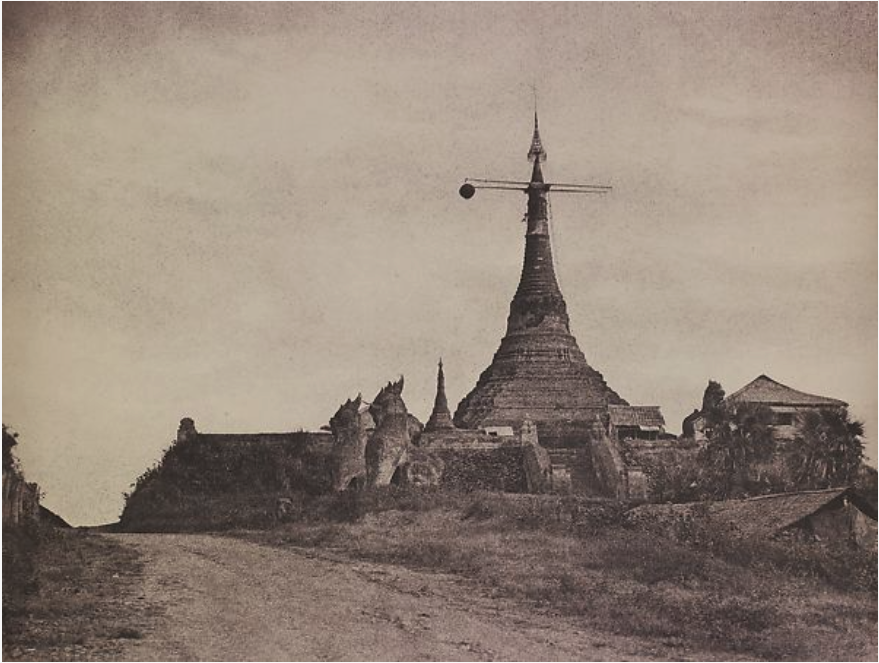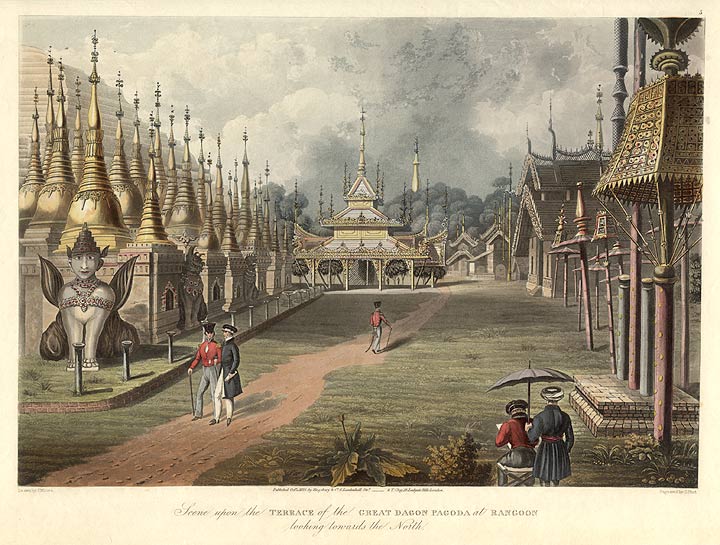|
Myedu
Myedu ( ) is a small town located in Kanbalu Township, Sagaing Region, Myanmar (Burma). The town was the fief of King Hsinbyushin (r. 1763–1776) of Konbaung Dynasty The Konbaung dynasty (), also known as the Third Burmese Empire (တတိယမြန်မာနိုင်ငံတော်), was the last dynasty that ruled Burma from 1752 to 1885. It created the second-largest empire in history of Mya ..., who was also known as Myedu Min; (). References {{Authority control Populated places in Sagaing Region Shwebo District ... [...More Info...] [...Related Items...] OR: [Wikipedia] [Google] [Baidu] |
Hsinbyushin
Hsinbyushin (, , ; ; 12 September 1736 – 10 June 1776) was the third emperor of the Konbaung dynasty of Burma (Myanmar) from 1763 to 1776. The second son of the dynasty founder Alaungpaya is best known for his wars with Qing China and Siam, and is considered the most militaristic king of the dynasty. His successful defense against four Qing invasions preserved Burmese sovereignty. His 1765 invasion of Ayutthaya brought an end to the Ayutthaya Kingdom. The near simultaneous victories over Qing and Siam has been referred to as testimony "to a truly astonishing elan unmatched since Bayinnaung." He also raised the Shwedagon Pagoda to its current height in April 1775. The deputy commander-in-chief during his father's reunification campaigns (1752–1759), Hsinbyushin as king pursued an expansionist policy against his neighbors. By 1767, his armies had put down a rebellion in Manipur, captured the Laotian states, sacked and destroyed Ayutthaya, and driven back two invasions by C ... [...More Info...] [...Related Items...] OR: [Wikipedia] [Google] [Baidu] |
Yangon
Yangon, formerly romanized as Rangoon, is the capital of the Yangon Region and the largest city of Myanmar. Yangon was the List of capitals of Myanmar, capital of Myanmar until 2005 and served as such until 2006, when the State Peace and Development Council, military government relocated the administrative functions to the purpose-built capital city of Naypyidaw in north central Myanmar. With over five million people, Yangon is Myanmar's most populous city and its most important commercial centre. Yangon boasts the largest number of colonial-era buildings in Southeast Asia, and has a unique Downtown Yangon, colonial-era urban core that is remarkably intact. The colonial-era commercial core is centered around the Sule Pagoda, which is reputed to be over 2,000 years old. The city is also home to the gilded Shwedagon Pagoda – Myanmar's most sacred and famous Buddhist pagoda. Yangon suffers from deeply inadequate infrastructure, especially compared to other major cities in Sou ... [...More Info...] [...Related Items...] OR: [Wikipedia] [Google] [Baidu] |
Myanmar
Myanmar, officially the Republic of the Union of Myanmar; and also referred to as Burma (the official English name until 1989), is a country in northwest Southeast Asia. It is the largest country by area in Mainland Southeast Asia and has a population of about 55 million. It is bordered by India and Bangladesh to its northwest, China to its northeast, Laos and Thailand to its east and southeast, and the Andaman Sea and the Bay of Bengal to its south and southwest. The country's capital city is Naypyidaw, and its largest city is Yangon (formerly Rangoon). Early civilisations in the area included the Tibeto-Burman-speaking Pyu city-states in Upper Myanmar and the Mon kingdoms in Lower Myanmar. In the 9th century, the Bamar people entered the upper Irrawaddy River, Irrawaddy valley, and following the establishment of the Pagan Kingdom in the 1050s, the Burmese language and Culture of Myanmar, culture and Buddhism in Myanmar, Theravada Buddhism slowly became dominant in the co ... [...More Info...] [...Related Items...] OR: [Wikipedia] [Google] [Baidu] |
Sagaing Region
Sagaing Region (, ; formerly Sagaing Division) is an administrative divisions of Myanmar, administrative region of Myanmar, located in the north-western part of the country between latitude 21° 30' north and longitude 94° 97' east. It is bordered by Chin State and India's Nagaland, Manipur, and Arunachal Pradesh states to the west and north, Kachin State, Shan State, and Mandalay Region to the east and Mandalay Region and Magway Region to the south. The Ayeyarwady River forms a greater part of its eastern and also southern boundary. Sagaing Region has an area of , making it the second-largest subdivision of Myanmar. In 1996, it had a population of over 5,300,000, while its population in 2012 was 6,600,000. The urban population 2012 was 1,230,000, and the rural population was 5,360,000. The namesake of Sagaing Region is Sagaing but the administrative capital and largest city is Monywa. History 1st to 13th centuries The Pyu people, Pyu were the first in recorded history to popul ... [...More Info...] [...Related Items...] OR: [Wikipedia] [Google] [Baidu] |
Kanbalu Township
Kanbalu Township is a township in Kanbalu District in the Sagaing Division of north-western Burma."Myanmar States/Divisions & Townships Overview Map" Myanmar Information Management Unit (MIMU) The principal town is Kanbalu
Kanbalu (also spelt Kantbalu
Myanmar's NET) is a town in . References External links [...More Info...] [...Related Items...] OR: [Wikipedia] [Google] [Baidu] |
Myanmar Standard Time
Myanmar Standard Time (, ), formerly Burma Standard Time (BST), is the standard time in Myanmar, 6.5 hours ahead of UTC. Myanmar Standard Time (MMT) is calculated on the basis of 97°30′E longitude.MFF 2002: 1 MMT is used all year round, as Myanmar does not observe daylight saving time.USNAO 2013: 262 History Pre-colonial period Myanmar did not have a standard time before the British colonial period. Each region kept its own local mean time, according to the Burmese calendar rules: sunrise, noon, sunset and midnight.(Clancy 1906: 57): The Burmese calendar recognizes two types of day: astronomical and civil. The mean Burmese astronomical day is from midnight to midnight, and represents 1/30th of a synodic month or 23 hours, 37 minutes and 28.08 seconds. The civil day comprises two halves, the first half beginning at sunrise and the second half at sunset. The day was divided into eight 3-hour segments called ''baho'' (ဗဟို), or sixty 24-minute segments called ''nayi'' ... [...More Info...] [...Related Items...] OR: [Wikipedia] [Google] [Baidu] |
Fief
A fief (; ) was a central element in medieval contracts based on feudal law. It consisted of a form of property holding or other rights granted by an overlord to a vassal, who held it in fealty or "in fee" in return for a form of feudal allegiance, services or payments. The fees were often lands, land revenue or revenue-producing real property like a watermill, held in feudal land tenure: these are typically known as fiefs or fiefdoms. However, not only land but anything of value could be held in fee, including governmental office, rights of exploitation such as hunting, fishing or felling trees, monopolies in trade, money rents and tax farms. There never existed a standard feudal system, nor did there exist only one type of fief. Over the ages, depending on the region, there was a broad variety of customs using the same basic legal principles in many variations. Terminology In ancient Rome, a " benefice" (from the Latin noun , meaning "benefit") was a gift of land () f ... [...More Info...] [...Related Items...] OR: [Wikipedia] [Google] [Baidu] |
Konbaung Dynasty
The Konbaung dynasty (), also known as the Third Burmese Empire (တတိယမြန်မာနိုင်ငံတော်), was the last dynasty that ruled Burma from 1752 to 1885. It created the second-largest empire in history of Myanmar, Burmese history and continued the administrative reforms begun by the Toungoo dynasty, laying the foundations of the modern state of Burma. The reforms, however, proved insufficient to stem the advance of the British Empire, who defeated the Burmese in all three Anglo-Burmese Wars over a six-decade span (1824–1885) and ended the millennium-old Burmese monarchy in 1885. Pretenders to the dynasty claim descent from Myat Phaya Lat, one of Thibaw's daughters. An expansionist dynasty, the Konbaung kings waged campaigns against the Mizo Chieftainship, Lushai Hills, Möng Mao, Manipur, Assam, Kingdom of Mrauk U, Arakan, the Mon people, Mon kingdom of Restored Hanthawaddy Kingdom, Pegu, Siam, and the Qing dynasty of China—thus establis ... [...More Info...] [...Related Items...] OR: [Wikipedia] [Google] [Baidu] |
Populated Places In Sagaing Region
Population is a set of humans or other organisms in a given region or area. Governments conduct a census to quantify the resident population size within a given jurisdiction. The term is also applied to non-human animals, microorganisms, and plants, and has specific uses within such fields as ecology and genetics. Etymology The word ''population'' is derived from the Late Latin ''populatio'' (a people, a multitude), which itself is derived from the Latin word ''populus'' (a people). Use of the term Social sciences In sociology and population geography, population refers to a group of human beings with some predefined feature in common, such as location, race, ethnicity, nationality, or religion. Ecology In ecology, a population is a group of organisms of the same species which inhabit the same geographical area and are capable of interbreeding. The area of a sexual population is the area where interbreeding is possible between any opposite-sex pair within the area ... [...More Info...] [...Related Items...] OR: [Wikipedia] [Google] [Baidu] |




